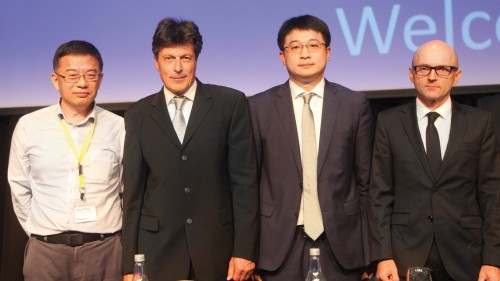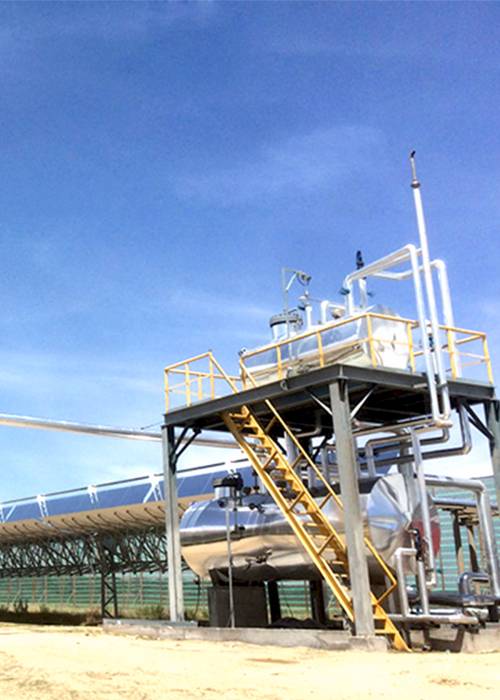Mar 01, 2018 Read time: approx. MinutesMinute
Silicone Fluid Used to Generate Solar Thermal Energy Receives Innovation Prize
Technology network honors WACKER and its Chinese partner Royal Tech
WACKER and China’s Royal Tech CSP Limited, which has specialized in developing and promoting highly efficient solar thermal power plants, were awarded an innovation prize by the SolarPACES technology network. Since 2016, both companies have been testing a newly developed and highly heat-resistant silicone fluid as a heat-conducting agent for parabolic trough collectors at a solar thermal power plant in Inner Mongolia (China).
Professor Zhifeng Wang, vice chair of SolarPACES’ Executive Committee and head of Solar Thermal Energy and Photovoltaics at the Chinese Academy of Sciences in Beijing, presented the technology award at the 23rd SolarPACES Conference in Santiago, Chile.

Professor Zhifeng Wang, the vice chair of SolarPACES’ Executive Committee, presented the innovation award to WACKER’s head of R&D, Dr. Fridolin Stary, Royal Tech CSP’s strategy director Dou Huaixin, and WACKER project manager Erich Schaffer (from left).
Most of the heat-transfer media currently in use consist of aromatic hydrocarbon compounds. Because of their limited thermal load capacity, they cannot be used at temperatures exceeding 400 °C. Low temperatures, too, are a problem. Since such media solidify at outside temperatures below 12 °C, solar power stations often have to be equipped with trace heating.
By contrast, WACKER’s new HELISOL® silicone fluid withstands operating temperatures of up to 425 °C and remains fluid at temperatures as low as -40 °C, thereby increasing efficiencies and energy yields. Silicones also release less hydrogen than conventional media. Experts therefore assume that the lifetime of the receiver in which the oil circulates will be far longer.
WACKER’s research head Dr. Fridolin Stary and project manager Erich Schaffer accepted the award. “This silicone fluid sets new standards and makes solar thermal energy even more attractive for operators – both ecologically and economically,” said Dr. Stary.
“WACKER and RoyalTech have succeeded in extending the physical limits of heat-transfer media in solar power plants in terms of high- and low-temperature resistance. Operators of large-scale systems can now boost the efficiency and reliability of their systems.”
Professor Zhifeng Wang, vice chair of SolarPACES’ Executive Committee

CSP (concentrated solar power) plants capture sunlight in parabolic trough collectors and use it to heat the heat-transfer medium flowing through a vacuum pipe.
SolarPACES
Solar Power and Chemical Energy Systems (SolarPACES) is a multinational research network in the field of concentrated solar power (CSP). Since its foundation in 1977, this platform has shaped research into new technologies and strategies for concentrated solar power. SolarPACES, as a technology collaboration program of the IEA (International Energy Agency), coordinates research by international solar thermal experts. The network currently comprises 19 member states.



